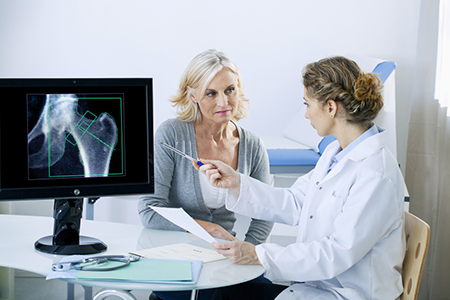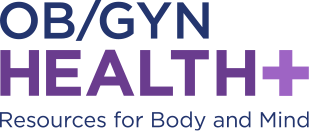 Healthy bones through every stage of a woman’s life
Healthy bones through every stage of a woman’s life
Women are at a greater risk for osteoporosis—which causes a weakening of the bones—than men. Because the hormonal changes in menopause are linked to reduced bone density, this condition is especially common in women after menopause. And it can make fractures more likely during this stage of your life.
As a result, osteoporosis screening is often recommended during a woman’s post-menopausal years. However, prevention and support for bone health are important much earlier. Here’s how you can keep your bones healthy from the teen years to menopause and beyond.
Teenage years
The foundation for bone health starts early in a woman’s life. During adolescence, the bones not only grow in size and length, but bones also become denser. According to the Hormone Health Network, the more bone mass that a young woman builds during these crucial years, the better protected she is from the loss of bone mass later on in life.
To encourage healthy bones during the teen years, focus on getting enough nutrients such as calcium, vitamin D, and protein. Physical activity during this stage can support a healthy musculoskeletal system later on too.
Childbearing years
Most of the gains in bone mass happen in adolescence. However, women don’t typically reach their peak bone mass until their 20s or 30s, says the American Academy of Orthopedic Surgeons. So activities like a healthy diet that includes calcium and routine weight-bearing exercise remain important.
The childbearing years also bring special considerations like pregnancy and breastfeeding. According to an article in Clinical Obstetrics and Gynecology, you may lose a small amount of bone mass—between 3-10%—during pregnancy and over a period of six months of breastfeeding. However, this is usually regained in the following months.
To support bone health and make sure both you and your baby have the nutrients you need, most prenatal supplements contain calcium and vitamin D.
Menopause and beyond
The hormone estrogen helps maintain and protect the cells in your bones. When the amount of estrogen in your body decreases during menopause, it can mean a decrease in bone density as well. The National Osteoporosis Foundation estimates 1 in 2 women over 50 will break a bone because of osteoporosis, and your risk of a broken hip is the same as your risk of breast, ovarian, and uterine cancer added together.
Many factors affect how drastic bone loss is after menopause, such as your bone density before menopause or your choices around hormone replacement therapy. Factors like your health history, race, or diet can play a role too. These are all topics to discuss with your OB GYN as you navigate perimenopause and post-menopause care decisions.
Diagnosing and treating osteoporosis
Osteoporosis screening using a bone density scan, called a DEXA scan, is recommended by most health organizations for women at age 65. This test uses radiology imaging to scan your body and provides a score that helps you understand your bone density. If you have risk factors for osteoporosis, you may have a scan sooner.
Your doctor can help you understand your scan results and consider them together with your overall risk of a fracture due to osteoporosis. If you are at risk, various medications can help reduce the chance of a fracture.
Your doctor may also recommend exercises or other lifestyle changes to support bone strength. For example, the American College of Obstetricians and Gynecologists says weight-bearing exercises can keep bones stronger, and activities that improve balance, like yoga or Pilates, can help reduce your risk of falls, a common cause of broken bones.
By understanding your risk and the lifestyle choices you can make to protect yourself, you’ll be more prepared to prevent osteoporosis-related fractures and keep your bones healthy in the years to come.
